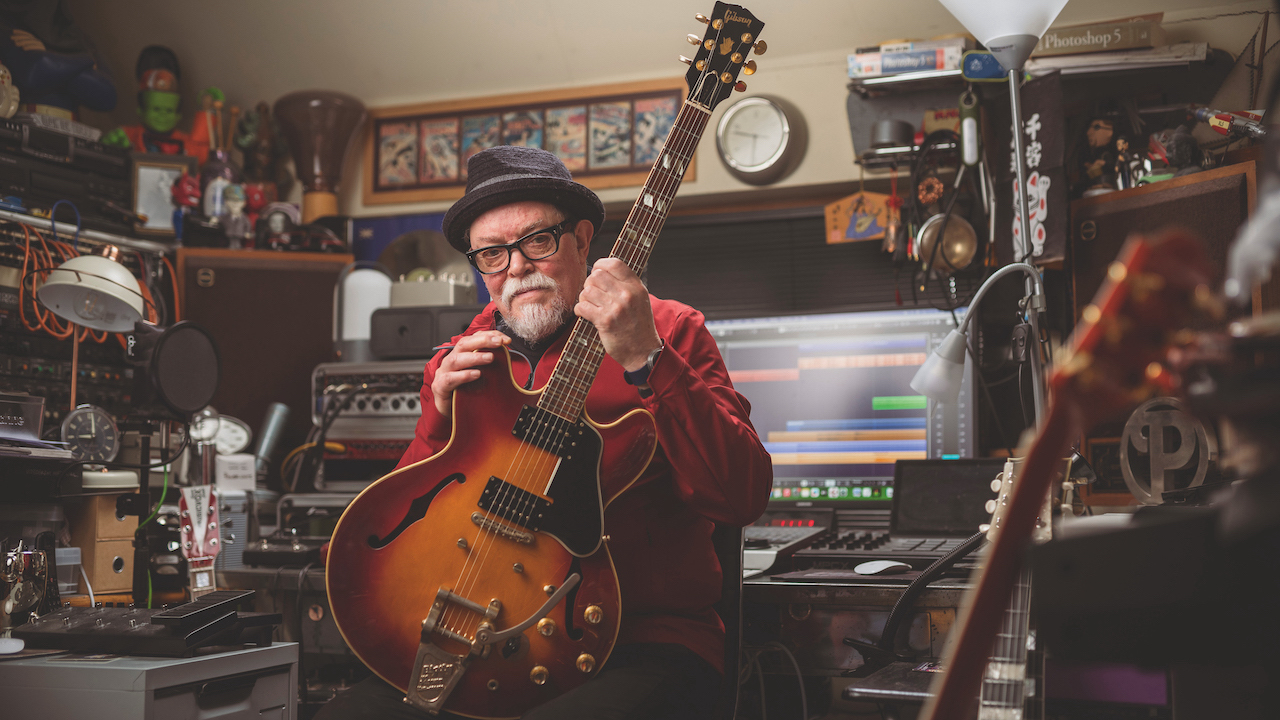
Bill Nelson is not your average guitar hero. Looking at his extensive back catalogue – from the early solo work, through Be-Bop Deluxe, Red Noise and beyond – shows an artist who maintains a youthful sense of curiosity and a disregard for the categories that can become a creative straitjacket for many.
Bill operates outside the mainstream, in a similar way to Jeff Beck or Mike Oldfield in having all the instrumental skills you could wish for but seeking to use these purely for musical expression, rather than as an end in itself. Collaborations with artists such as David Sylvian, Gary Numan, the Skids and Yellow Magic Orchestra, to name just a few, further demonstrate this.
Since 2000, Bill has released an impressive number of albums on his own label, the latest being 2023’s Starlight Stories, and he’s also currently putting the finishing touches to a three-album project under the umbrella title of Guitars Of Tomorrow.
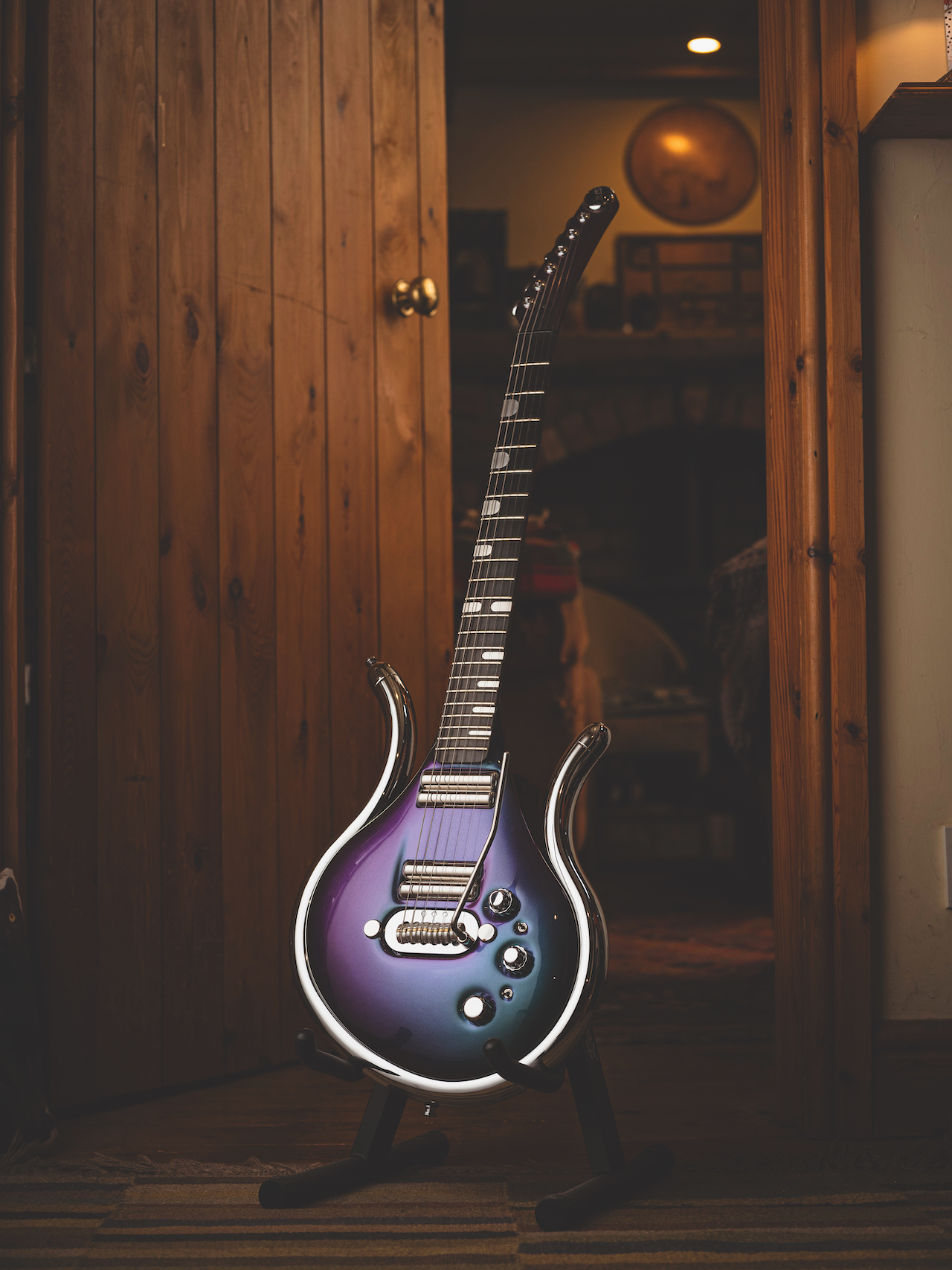
Is it true that your latest album, Starlight Stories, was inspired by books from your childhood?
“Well, I’m a ‘certain age’, 76 this year, and you tend to start looking back. I often go back to my youth or childhood and find things that inspired me then that can translate into something creative and musical in the present day. These were books that my mother had as a child. They were thick like a telephone directory and had lots of classic stories in them, by HG Wells and other people.
“There were classical tales and fairy tales, a real compendium of different things. Those elements of fantasy stuck with me from childhood and I wanted to get something that felt a little bit like that – but without necessarily referencing them directly. It’s not so much a direct connection between those books and the music, but they set a process in action that helped the pieces come together.”
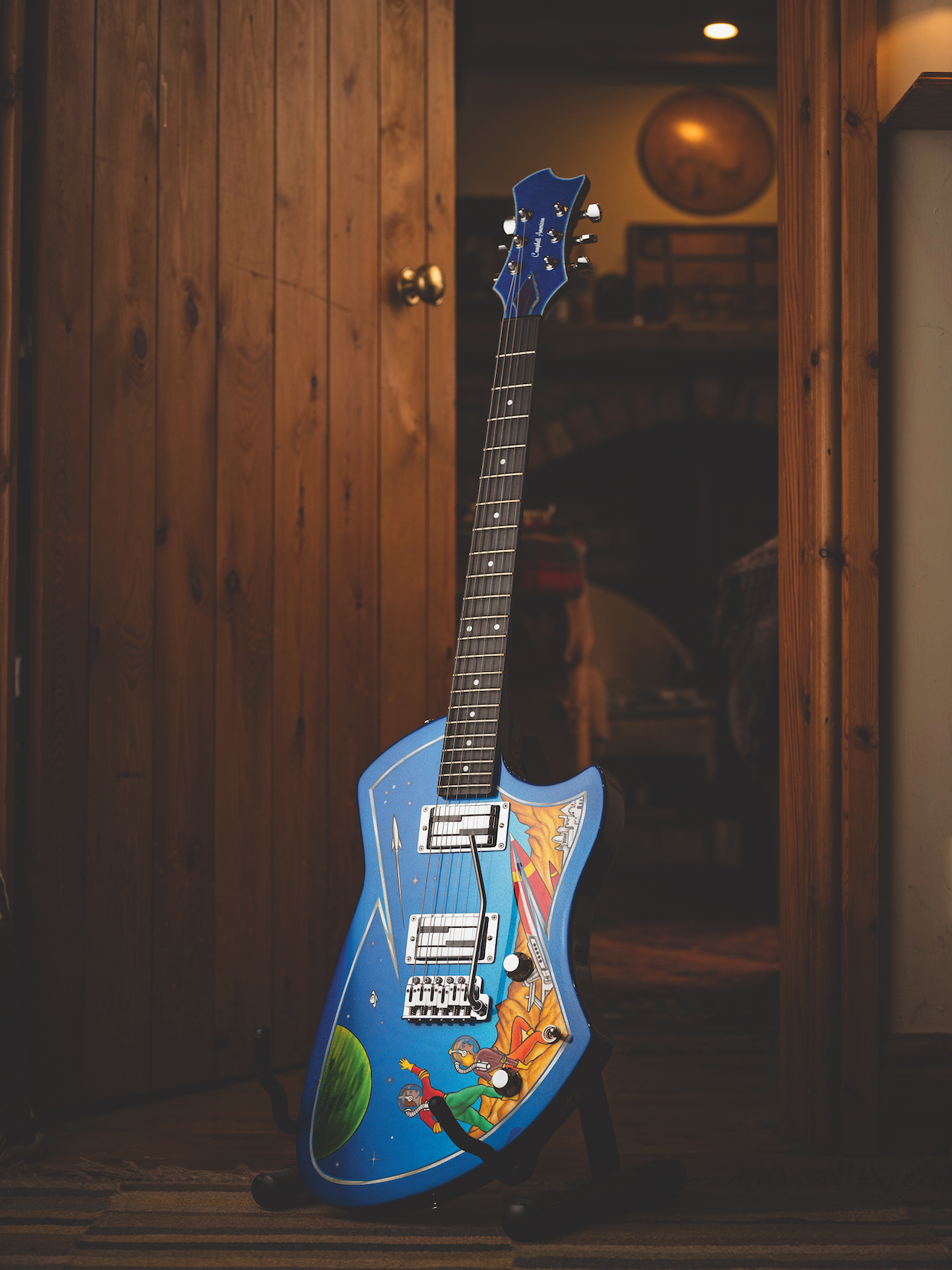
You’re incredibly prolific. Can you talk us through your creative process in the studio?
“I record virtually every day, usually in the evening, rather than the daytime. I like the sort of space that opens up as the world winds down, as it were. I go in without a definite idea usually and start by putting down some drum or percussion tracks and see what happens, see what the next thing should be or could be – that could be a guitar or keyboard part.
I record virtually every day, usually in the evening. I like the sort of space that opens up as the world winds down
“I’ve often compared it to decorating an empty room: the first thing you put down is the carpet, then you start moving the furniture in and moving it around till it feels how you want it to feel. The actual tune or song doesn’t emerge until a little further into that process. And then the lyrics probably happen last, which is the opposite to how it was way back in the early ’70s.
“Back then I had a day job in a local government office, and I used to write the lyrics on scraps of paper then take them home and make the music to them afterwards. The lyrics are now often generated from a title. I have notebooks full of them and a certain title might seem to fit a piece of music better than another one, so the lyrics will develop from that.
“It’s all a little vague until it gets to the latter stages, then you start to understand what you’ve been getting at and start shaping it into something that has coherence, you know… People read all kinds of things into the lyrics; sometimes they’re personal or autobiographical, sometimes they’re literally just streams of consciousness.”
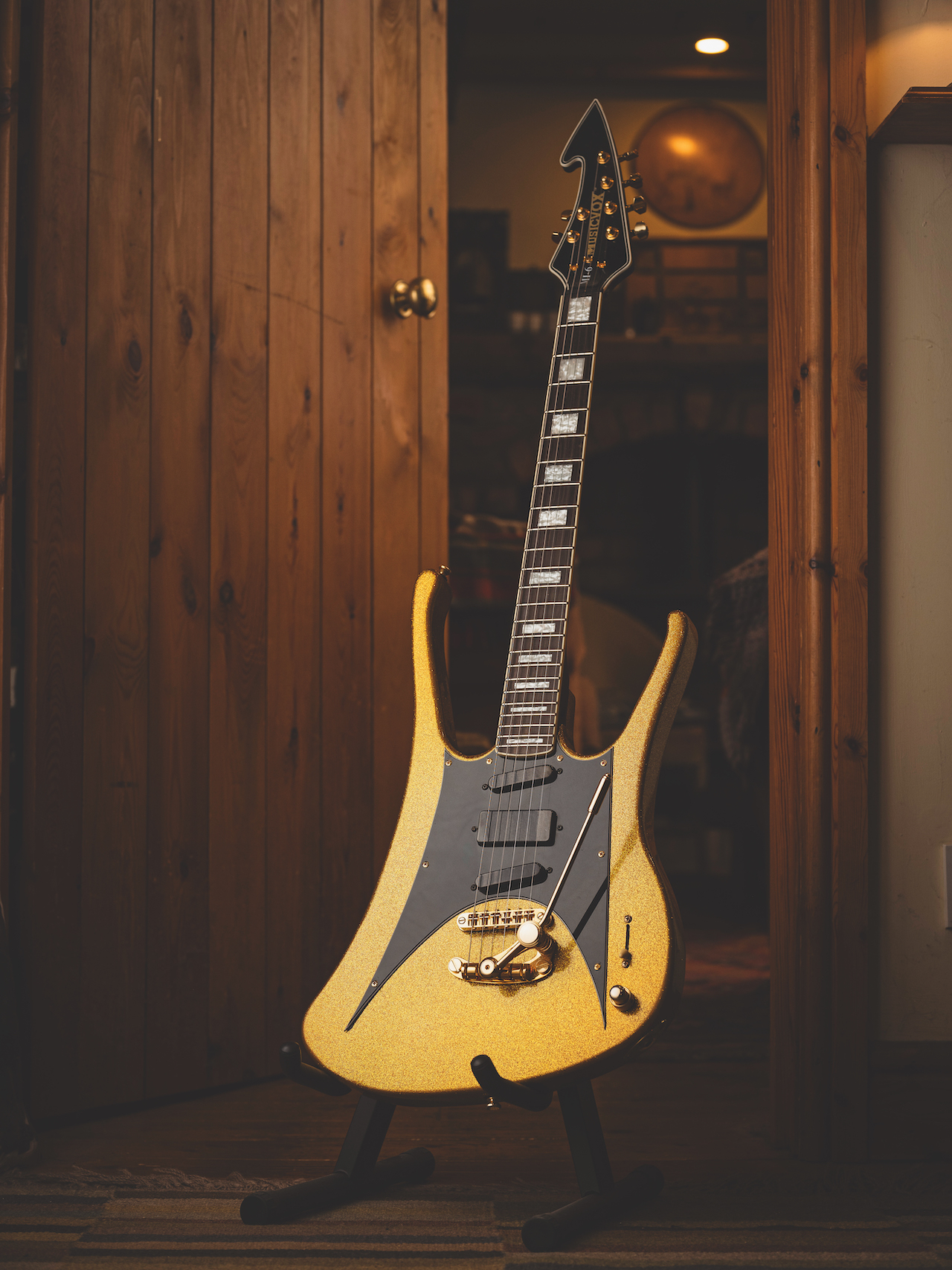
It sounds as though this process might be described as ‘getting out of your own way’…
“It’s exactly that. Back in the 1960s I was an art student. I was going to try to be a fine art painter at one point. One of the things we used to do when confronted with a blank canvas was to just start making marks on it, then You draw from a wide variety of influences. Tell us about what inspires your music.
“From an early age I’ve been exposed to all kinds of music. My father was a jazz saxophonist, so I heard lots of big band/swing music. At my first school they did classical music appreciation, even though we were only five years old!
“Then The Shadows and Duane Eddy made me want to play the guitar. Then I got into Chet Atkins, Joe Pass, Wes Montgomery…. plus more avant-garde electronic music and so on. I think my playing draws on all those elements, not consciously, but all those things are below the surface and somehow shape what I do.”
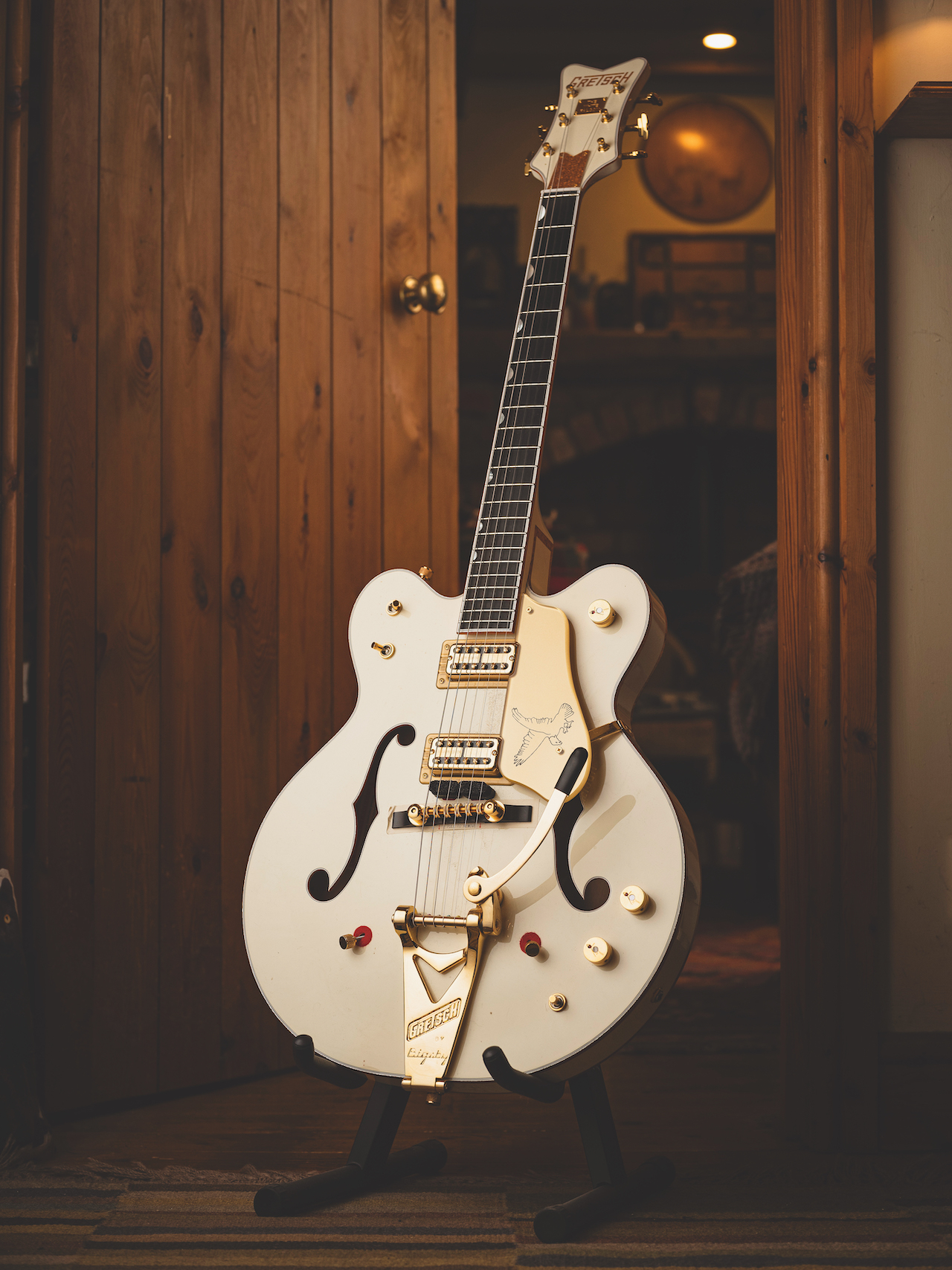
Are you someone who enjoys using technology in the studio?
“For me, technology gets in the way. I just want to get on with the music. I don’t want to be fiddling about with menus for this, that and the other…”
How are you getting your guitar tones in the studio these days?
“I haven’t used an amp for years and years. I have got amps here, but to tell you the truth I usually use digital processors. I started with a little Zoom unit, but I’ve had the DigiTech Valve FX, Line 6 Pod, I’ve got an Axe-Fx, a new Pod Go…. The one I use the most is a very early Pod. They do differ; the best one for me has the script logo. I bought another as a backup with the oblong logo, which sounds completely different!
“In fact, there’s a mix of a [Be-Bop Deluxe] piece called the Modern Music Suite that hadn’t made the original album [Live! In The Air Age] because of a fault on the guitar cable during the intro. I plugged into the Pod and played around with it to match the tone… We dropped in four or eight bars of the introduction and nobody could tell that I’d done it!”
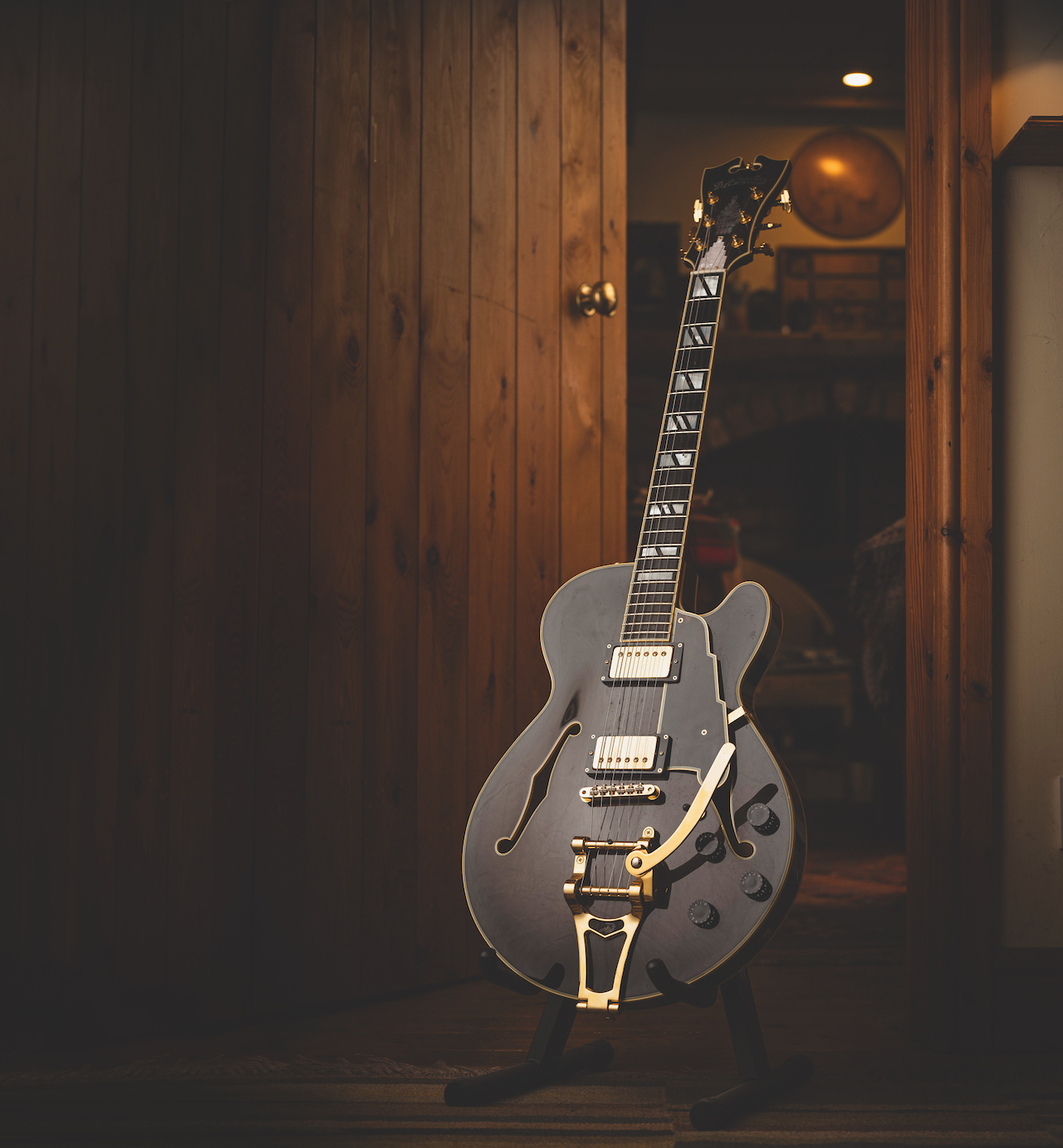
After Be-Bop Deluxe, you changed to a more modern direction with Red Noise in the late ’70s. What did you feel about the changes in music happening elsewhere at that time, such as punk?
“I remember writing an article about this at the time for the NME [laughs]. I thought the spirit was in the right place, but the music wasn’t adventurous enough – sort of over-amped Chuck Berry with a snarling vocal over the top. I didn’t see that as being anything challenging. Post-punk/new wave got a bit more interesting when other elements came into it musically.”
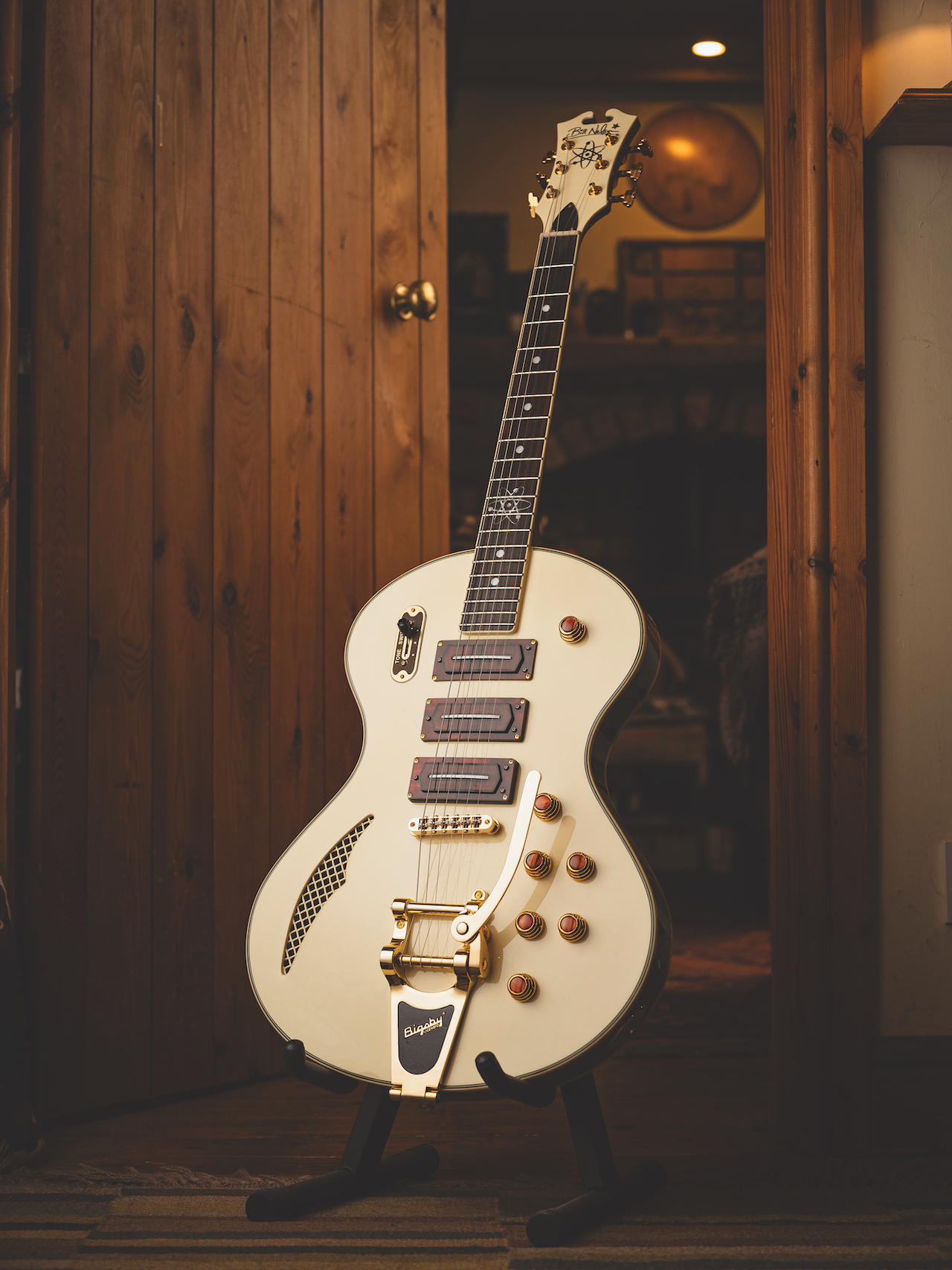
From the ’80s, you began collaborating with a wide variety of artists. Do you have any favourite memories?
“Oh gosh, yes. I worked with a very good friend of mine Harold Budd. We did an album in New Orleans at Daniel Lanois’ studio back in the ’90s. The studio was actually in an old mansion – it wasn’t built anything like a studio.
“All the players, myself included, sat in a circle in the lounge area, surrounded by Mexican Day Of The Dead dolls and candles… The engineer was working on headphones while we recorded and played it back to us through the monitors when we’d finished, so then we really heard what we’d been doing for the first time. That was a special occasion.
“In terms of my own things, there are some albums that I’m more fond of than others. One of them is called The Alchemical Adventures Of Sailor Bill. The process of making that was quite intense, but I feel it’s one of the better things I’ve done over the years.
“When I finish an album and it’s released, I tend to forget about it and start on another one straight away. I rarely listen back to my work because all I hear are the things I wish I’d done differently. In the end, you’ve got to let them go and have a life of their own.”
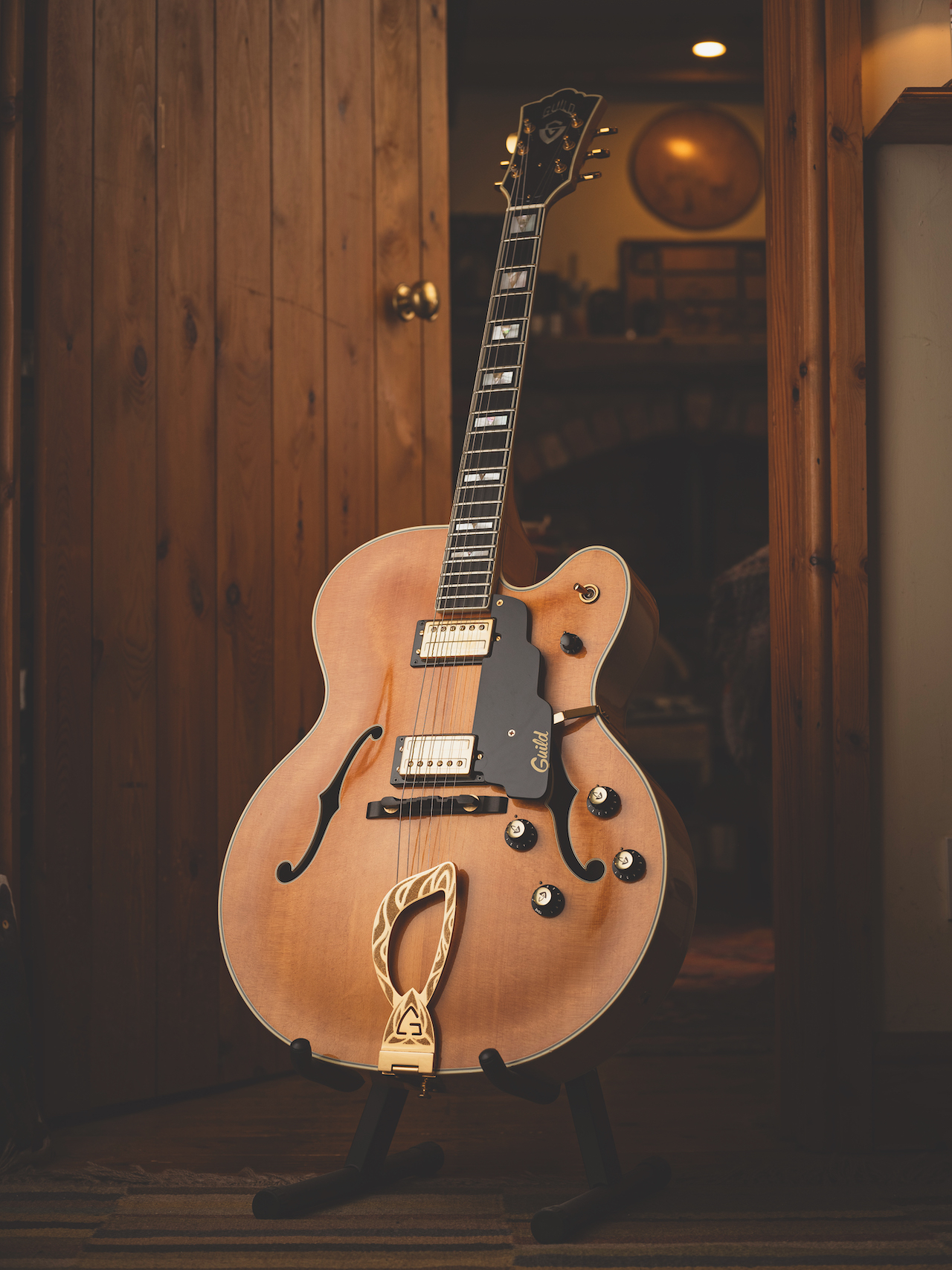
On to gear now – tell us about some of your favourite guitars from your collection.
“It sounds crazy, but I have about 80 guitars and only a small house! I put maybe eight guitars at a time in my studio and I’ll play those for a couple of months or so, then I’ll swap them around and get another eight out and play those.
“One that has been used a lot of late is a Gretsch White Falcon. It’s a reissue of a 1962 twin-cutaway Falcon; I think only 15 were made. It has the complete ’62 spec with the twin string mutes. When I was a teenager, I had the Gretsch catalogue and used to drool over that particular model, so it was great to be able to get one.
I have about 80 guitars and only a small house! I put eight in my studio for a couple of months, then I’ll swap them around
“I also have one called an Isana Black Pearl, it’s German made. When Elvis was in the army in Germany [from 1958 to ’60], his father arranged for him to have one. There are pictures of him in his army uniform playing one of these. It’s a reissue; they made eight of them. I use it quite a lot and it’s got a really nice sound on the neck pickup – full but a nice ‘airiness’ to it. Sometimes you can even get a Stratocaster-type tone out of it.
“I’ve got a Gus guitar that has an unusual finish. It moves from purple to green with a slightly orange tint in it when you move it against the light. It’s MIDI-equipped, so I can drive a synth from that.
“Each guitar, because of its looks, will put you in a certain frame of mind, so you’ll play differently. The lovely thing about guitars is that they can look so different from each other with weird and wonderful shapes and different colours, whereas a saxophone or a trumpet just looks like a saxophone or a trumpet all the time.”
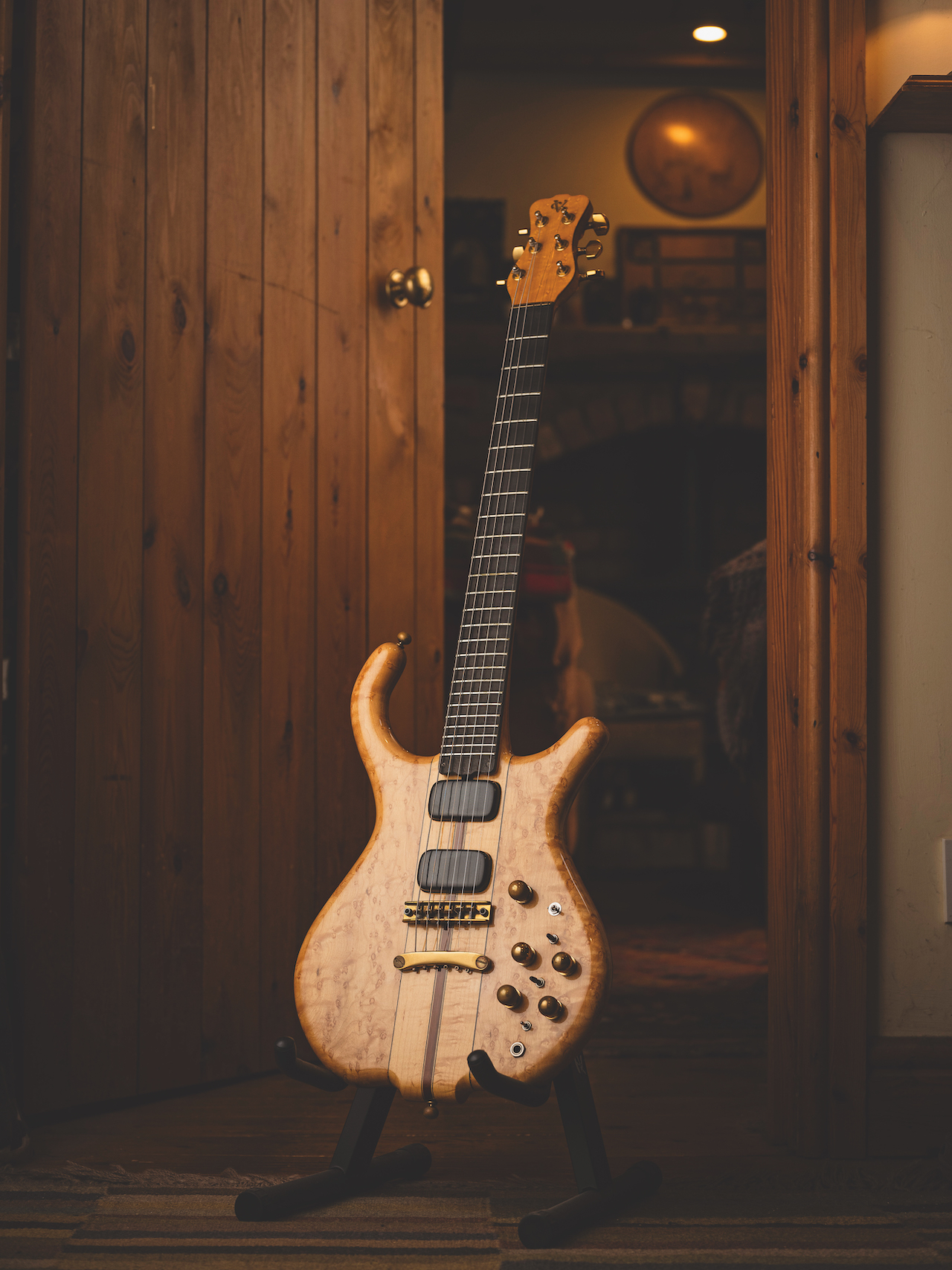
What about your Gibson ES-345?
“Yes, that was my second electric guitar, bought for me by my father. He had decided I was getting good enough to have a decent guitar. This must have been about 1963.
“At the time I was a huge Chet Atkins fan and I wanted a Gretsch Country Gentleman. My dad knew someone who had a Gibson 345 and arranged for Kitchens music shop in Leeds [of Kitchen-Marshall fame] to get in a Gibson ES-345 and a Gretsch Country Gentleman for me to try on the condition that they could sell us one of them.”
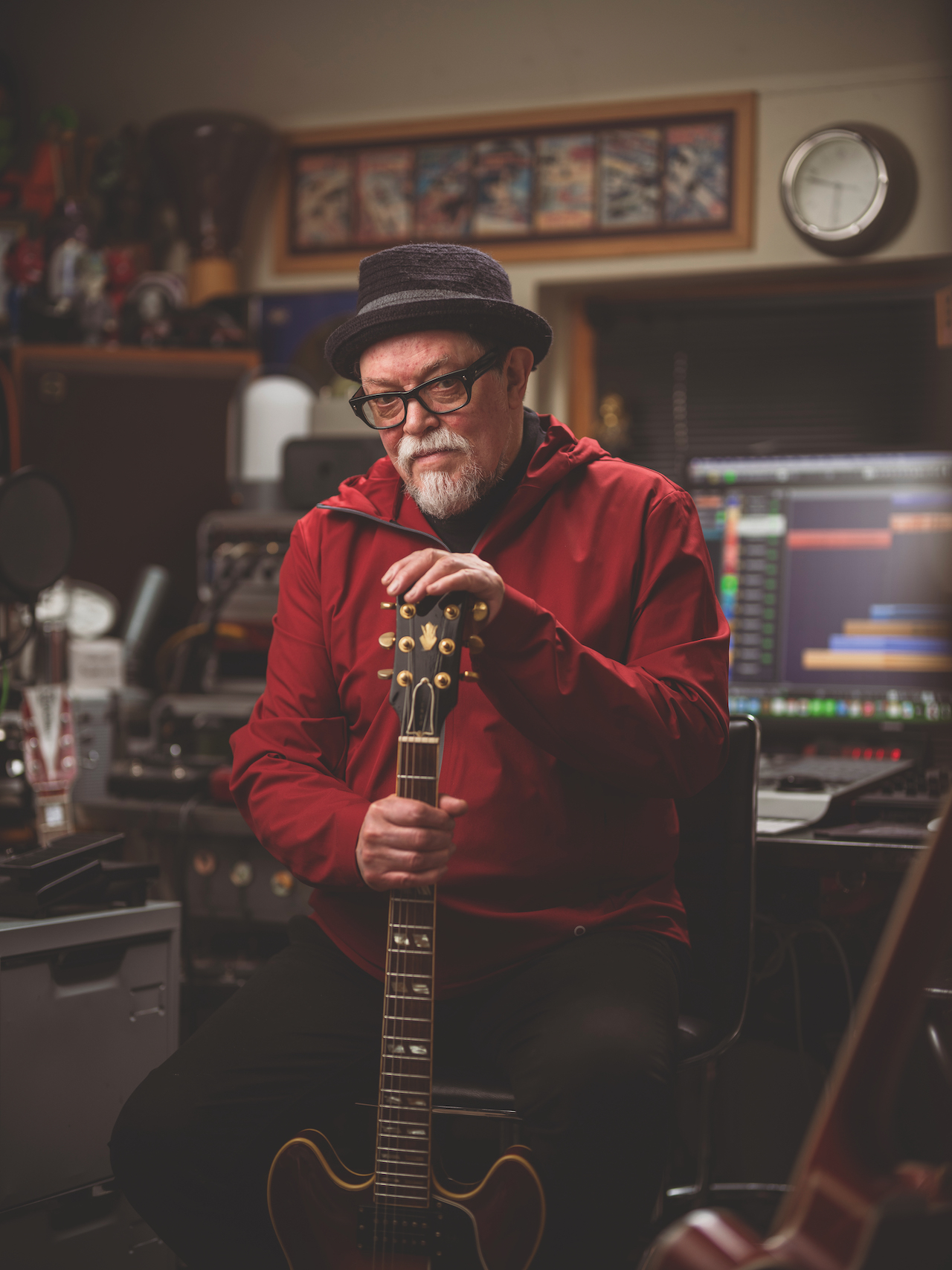
That must have been an exciting day…
“It was! I played the Country Gentleman first and thought, ‘This is great!’ Then, because my dad had insisted I try the Gibson as well, I picked the 345 up – and as soon as I picked it up it just felt right. I instantly changed my mind. It has stayed with me ever since and I’ll never sell it. It’s had some adventures over the years. Once, when I was playing in a teenage band, I grabbed hold of a microphone stand with my other hand on the neck of the guitar…
“I got this tremendous electric shock and fell off stage. Snow had melted into the building’s electrics and made it all live somehow. I came round on the stone floor with people saying, ‘Are you okay?’ and ‘Is your guitar insured?’ It was, but had to be sent back to Gibson for a brand-new neck. Then I had it refinished in the ’70s and tried taking the pickup covers off, as that was the fashion. It’s been through a few changes, but it’s still a nice guitar.”
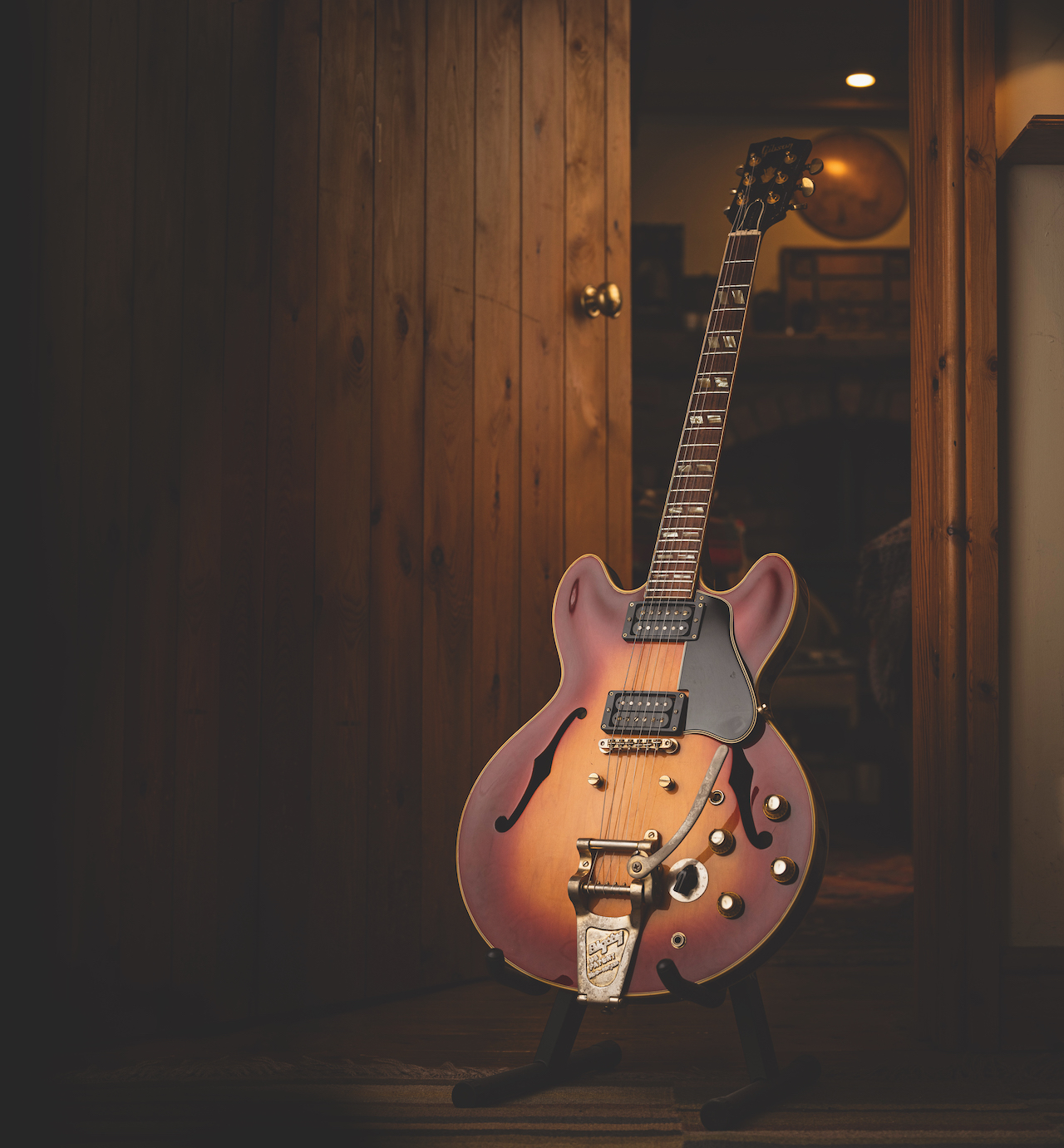
You seem to enjoy the ‘retro/futuristic’ school of guitar design, like your collaboration with Eastwood.
“Yes, I have several of their guitars. One of them you’ve photographed is the Astroluxe Custom. It’s one that I designed in collaboration with Eastwood and it’s a signature model.
“Originally, they were only going to produce 12 of them, but there was a demand for more, so I think 25 were produced in the end. It’s a pretty special, unusual guitar. It’s influenced by the old Wandre guitars but with three Charlie Christian pickups and no cutaway.”
- Starlight Stories is available now from Bandcamp.







